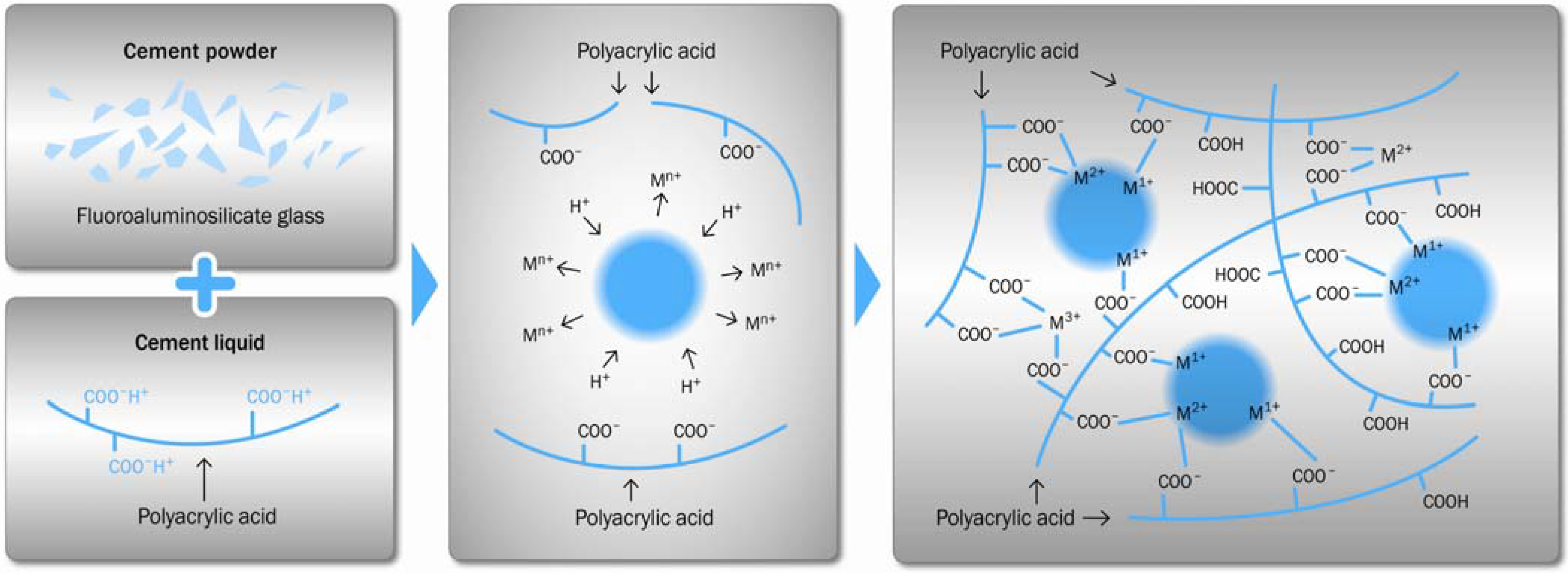| name | Glass Ionomer Filling Material |
| Classification | Dental restorative material |
| Pharmacokinetics | Glass ionomer cement is not absorbed systemically. It's a direct application material, and its effects are localized to the site of the filling. There are no pharmacokinetic profiles relevant to systemic circulation as the material is not ingested. |
| suggested dosage | Dosage is not applicable in this context. The amount of glass ionomer used is determined by the dentist based on the size and depth of the cavity and the specific needs of the patient. |
| indications | Glass ionomer cement is used for various dental restorations, primarily in situations requiring:
* Filling small to moderate sized cavities in primary and permanent teeth.
* Luting of orthodontic brackets (bonding them to teeth).
* Treating demineralized areas (like early caries).
* Base and liner applications under other restorative materials for better bonding and support.
* Filling of fissures and pits.
* Fissure sealants on permanent teeth. |
| Safety in pregnancy | Glass ionomer cement is generally considered safe for use during pregnancy. It's not absorbed systemically, thus minimal systemic effects are anticipated. However, as with all dental procedures, a discussion of risks and benefits with a qualified healthcare provider is recommended. |
| Safety in breastfeeding | No significant adverse effects on breastfeeding have been reported for glass ionomer cements. The material's minimal systemic absorption makes it generally considered safe during breastfeeding. |
| side effects | | 1 | Mild sensitivity or discomfort at the filling site, which is usually temporary. | | 2 | Possible slight irritation of the soft tissues adjacent to the filling (gingiva). | | 3 | Allergic reactions, though rare, are a theoretical possibility with certain components. | | 4 | Potential for marginal discoloration (a change in color around the edges of the filling). | | 5 | In rare cases, there might be a reaction to the monomer components, potentially leading to inflammation or sensitivity. | | 6 | Pain, swelling, or infection at the site of the filling (these are less common and usually indicate a complication that requires further evaluation) |
|
| alternatives | |
| contraindications | Patients with known allergies to any of the components of the glass ionomer cement should not receive it. Sensitivity to certain metals or other materials might also be a contraindication, but this should be considered in consultation with a dentist. |
| interactions | No known significant interactions with other medications or treatments. It's crucial to inform your dentist about all medications and health conditions you have, including any allergies. |
| warnings and precautions | Proper sterilization and infection control procedures are crucial to prevent potential infection at the filling site. Adequate cavity preparation by the dentist is crucial for optimal filling outcomes. Glass ionomers have a lower compressive strength than composite resins, therefore, they may be less suitable for high-stress areas. |
| additional informations | The longevity of a glass ionomer filling depends on various factors, such as the size and location of the cavity, patient oral hygiene, and technique of the dental professional. Regular dental checkups and professional cleanings are essential for maintaining the health of the restoration. |

